Over the past twenty years we've been gifted a bumper crop of memorable and beautiful albums that have found notable local and international success.
To celebrate and take stock of this period we gathered 40 panelists and 150 albums, awarded 2030 points, did a whole lot of debating and data crunching and we are proud to share with you our top 21 albums of the twenty-first century (so far):
Listen to our Top 21 (and more!) Spotify playlist.
# 21: The Beths - Future Me Hates Me (2018)
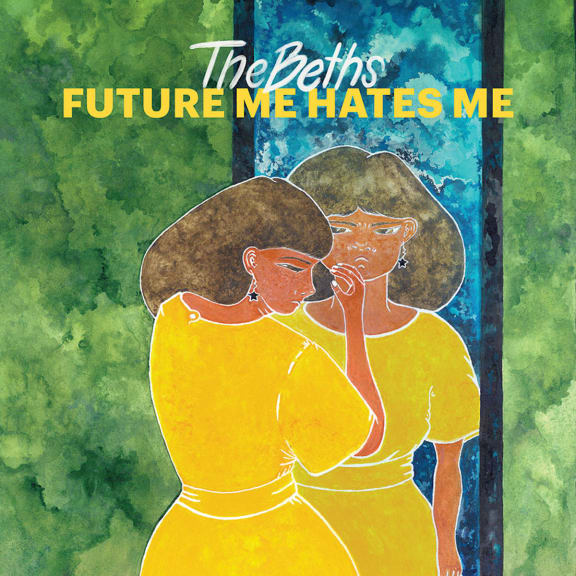
Photo: The Beths - Future Me Hates Me
"This is a perfect pop album. It's the perfect mix of rock and the Kiwi alternative sound. Also, every song is strong. No weak points in this record!" - Corin Dann, Morning Report
The Beths’ debut album brings a fresh and punchy sound to a well-trodden genre.
Put it down to chief songwriter and singer Liz Stokes' distinctly Kiwi twang, and her wry and self-deprecating lyrics that lament her own romantic failures. Combined with the masterful production by the band's guitarist and backing vocalist Jonathan Pearce, Future Me Hates Me is a delightful slice of power pop.
It's tight. It's hook-laden. It also artfully deploys many hallmarks of the 90s indie/alternative sound without sounding like a faithful covers band.
The album is a wonderful distillation of our national character flaws balanced with optimistic and bright melodies, handclaps and harmonies that all the band can belt out. It's where 'She'll Be Right' meets 'Yeah Right'
# 20: SJD - Songs from a Dictaphone (2007)
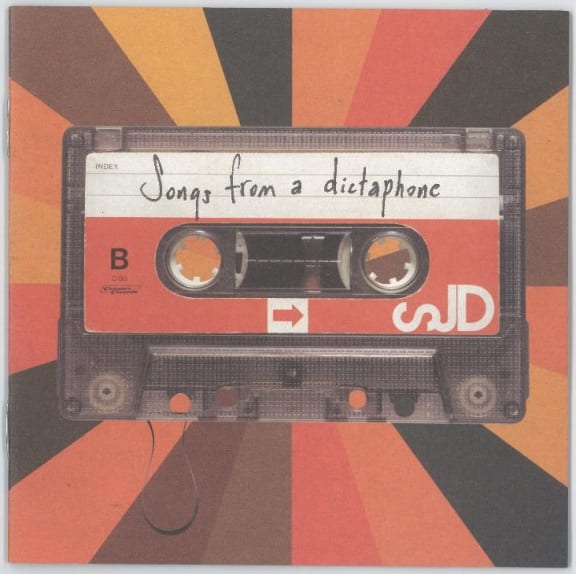
Photo: SJD - Songs From a Dictaphone
A wealth of riches from Auckland producer and multi-instrumentalist Sean James Donnelly split the votes on our panel.
Under the name SJD he's released seven full length albums in the 21st Century, an eye-watering work rate that’s reason enough for a place on this list.
But it’s SJD's poptastic and funky third album that floated to the top. Songs From a Dictaphone is an intelligent, sophisticated record bursting with so many textures and layers. It's synthy, its dancy and trancy; it's got horns, handclaps and bongo drums!
Even in the more reflective, tender numbers that hark back to his earlier work, there's still enough space among the intricate layers to let these moments breathe.
This is SJD at his most upbeat, adventurous and unbridled. It has stayed in our panelists’ ears for more than a decade and is well worth a revisit.
# 19: Ladi6 - The Liberation of (2010)
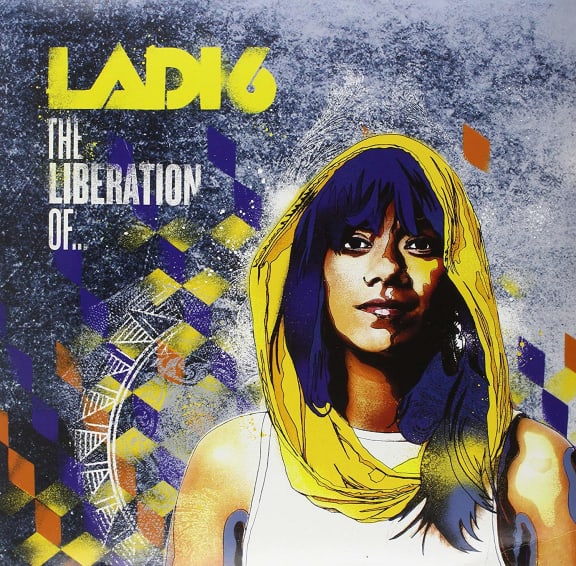
Photo: Ladi6 - The Liberation of
The second full-length release from Karoline Tamati saw the hip hop soul singer reach a new level of confidence and polish. The Liberation of... reached Gold sales status and netted Ladi6 the 2011 Taite Music Prize.
The album was recorded in eight weeks with German hip hop producer DJ Sepalot, while Ladi, her partner and producer Parks and their son Philli were living in Berlin. The album exudes an energy and inspiration drawn partly from their six months in Europe; a time that also included touring with artists such as Gil Scott-Heron and Mos Def.
Many of the extended Tamati family are stalwarts of the Aotearoa hip hop community – Scribe is Ladi's cousin, and on The Liberation of... Ladi proves her rapping chops and hip hop roots on '98 Til Now'.
Ladi's long association and collaborations with local acts like Shapeshifter and Fat Freddy's Drop have left an impression on her sound, but The Liberation of... sees Ladi extending those and branching out. Big bass numbers like 'Goodday' and platinum single 'Like Water' would have any nightclub around the world in a lather, while opening track 'Bang Bang' and the sassy 'Norwest' possess more than enough neo-soul slink to catch the ears of Erykah Badu fans.
# 18: Nesian Mystik - Polysaturated (2002)
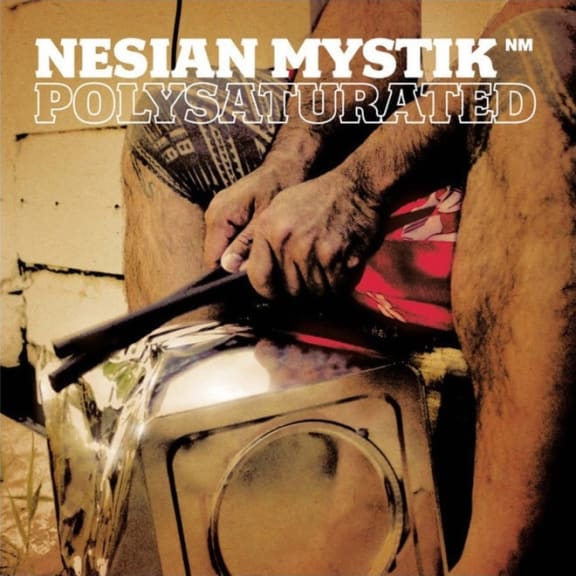
Photo: Nesian Mystik - Polysaturated
The debut album from Nesian Mystik signified a coming of age for some of our panelists: "I have extremely fond memories of learning each song verbatim off the CD cover at intermediate. To this day, any time 'Brothaz' comes on I NAIL it." In a way Polysaturated marked the broader societal changes of an early 21st century Aotearoa.
At the release of Polysaturated, Nesian Mystik – six young men variously of Māori, Polynesian, European and Pākehā descent, were the biggest and most successful local act. They could sing, they could play and most importantly, write their own music ('For the People' won the 2003 APRA Silver Scroll).
Polysaturated was certified four times platinum, with several memorable singles ('Nesian Style', 'It's On', 'Brothaz') and music videos that are formative summer memories for a generation of young New Zealanders.
The 'Nesian' sound incorporated funk, reggae, hip hop with the distinct Pacific drumming and guitar styles of the members' backgrounds.
For a few of our panel Nesian Mystik's Polysaturated was the number one local album of the 21st century, capturing a time and place that was uniquely them.
"Much as Jonah Lomu made it "cool" to be Tongan, Nesian Mystik showcased a unique Polynesian flavour, character and personality that I could relate to and celebrate."
# 17: Tiny Ruins - Olympic Girls (2019)
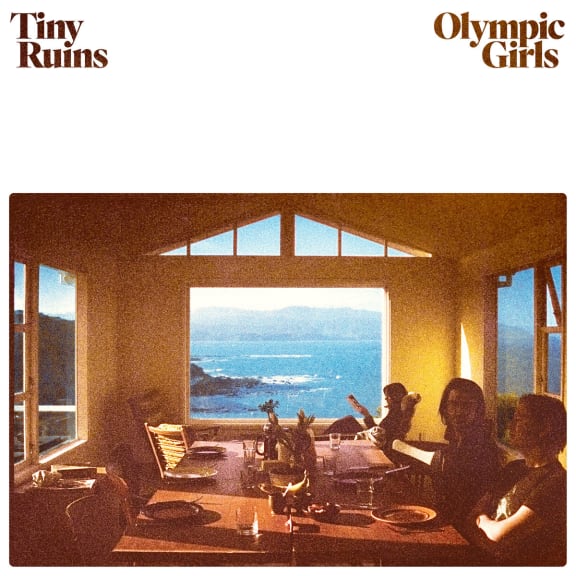
Photo: Tiny Ruins - Olympic Girls
Hollie Fulbrook's project is such a firm favourite with RNZers that all three Tiny Ruins albums were nominated for this list (Brightly Painted One, Some Were Meant For Sea).
But it was the most recent one Olympic Girls that narrowly won out over 2014's Brightly Painted One.
In this latest album, Hollie Fullbrook's storytelling remains as observant and mesmerising as ever, while her band of Cass Basil, Tom Healey, and Alexander Freer add colour and depth that is less muted than their earlier material.
The strength of Olympic Girls is that the music is intertwined into Fullbrook's poetic songwriting and singing. The subject matter on this latest album ranges from miscarriage ('Kore Waits in the Underworld'), motorcycle mishaps, Star Wars ('Holograms') and ex-criminals ('Olympic Girls').
Olympic Girls refers to the time Fullbrook shared a Greyhound bus across America with recently released prisoners who told of her of the time they watched coverage of the Olympics games, and in particular, how much they enjoyed the gymnastic competition.
The title track nicely illustrating a strength of Tiny Ruins, where they inhabit a tender, contemplative space for each song.
# 16 Marlon Williams - Make Way for Love (2018)
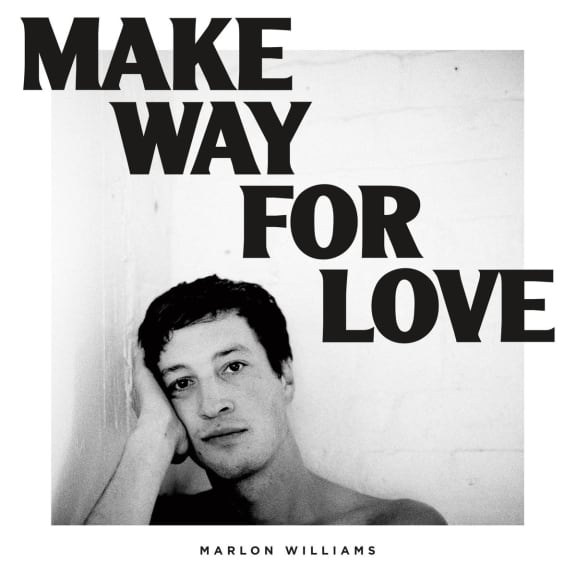
Photo: Marlon Williams - Make Way For Love
Gifted with one of the most rich and honeyed voices of this generation, Marlon Williams "could be singing a share report and listeners would still be swooning," according to one of our panellists.
Thankfully on his second full-length album, he chose to sing the words that "vomited" out of him after his break-up with fellow Lyttelton musician Aldous Harding.
Make Way for Love is the straight-shooting companion account of heartbreak to Harding's gothic and enigmatic album Party.
Williams' musical calling cards are well represented on this record: tremolo-heavy guitars, and that beautiful voice that evokes the spirit of Roy Orbison, Everly Brothers and early Elvis. Often these have seen Marlon Williams tagged as an alt-country balladeer, but on Make Way for Love we begin to see him stretch his range as a performer and songwriter.
With a mischievous tempo change, spooky synths and a swear word, 'Party Boy' reveals a lighthearted and edgier character beneath the slicked hair, button down shirt and bolo tie.
Williams also departs from the old crooner trope when inhabiting the more emotionally available and vulnerable masculinity of younger generations.
In particular 'Nobody Gets What They Want Anymore', an exquisite duet with Aldous Harding, lays bare that most fragile moment when a relationship is extinguished. The pair had been singing together since they were teenagers, so it was not such a leap to close off their romance in song.
But it's the end of the song where Williams fully inhabits the unguarded and defeated lover. He explained to RNZ that it was "a moment where I don't believe my own hype and the game's given up."
Misery never sounded as good as when two former lovers sing about it together.
# 15 Nadia Reid - Preservation (2017)
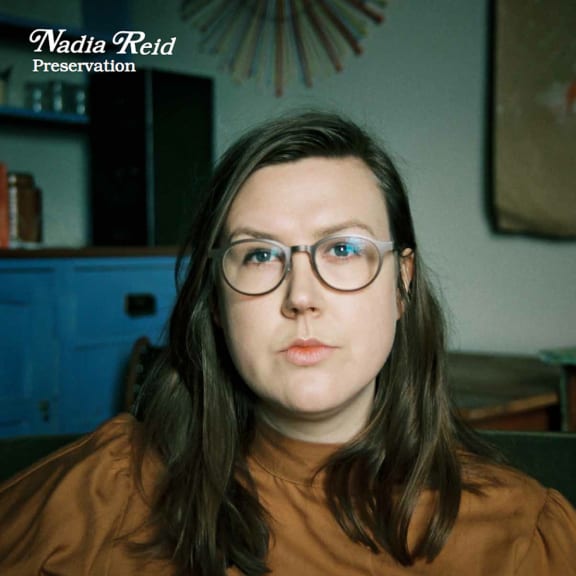
Photo: Nadia Reid - Preservation
The Port Chalmers artist's first album Listen To Formation, Look For The Sign was a top choice for one of our panelists, but it is Reid's second release, Preservation that won the consensus.
The album garnered international praise for singer-songwriter who emerged from the same Lyttelton scene as Marlon Williams, Aldous Harding and their producer Ben Edwards.
Edwards, whose production skills are now in high demand from overseas artists, wonderfully captures the hypnotic, enchanting clarity of Reid's voice, inviting early Joni Mitchell comparisons. This may also be due to the biographic and lyrical way Reid writes.
Take the Silver Scroll nominated 'Richard'. It is a cutting and vivid image about an ex-lover that deserves to join the rich canon of songs written by jilted lovers. The words are pointed, and yet Reid sings with a reserve and calm that only deepens the wound.
# 14: Connan Mockasin - Forever Dolphin Love (2011)
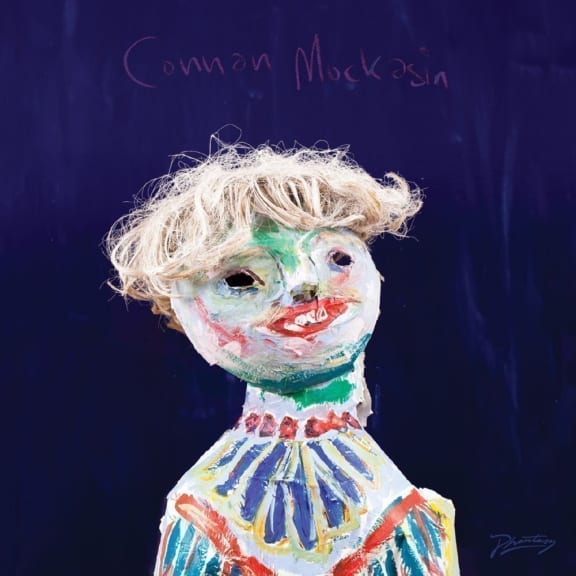
Photo: Connan Mockasin - Forever Dolphin Love
The first album under the Connan Mockasin name, Forever Dolphin Love hooked adventurous music listeners into his signature languid, dreamy psych guitar sound.
Not exactly a household name in New Zealand, Te Awanga's Connan Hosford is probably Hawkes Bay's most esteemed musical export.
Among his fans are Talking Heads' David Byrne, UK producer and multi-instrumentalist James Blake, and cult Millennial fave King Krule who even covered the title track 'Forever Dolphin Love'.
The echoing percussion, eerie breathy vocals, delicate chimes and woozy guitar make for a compelling listen.
A panelist summarised the record as "beautiful, unique, mysterious. It inhabits its own universe. It’s also deeply melancholic, and, I would suggest, hugely influential on a surprisingly diverse array of music."
Since this album, Hosford has been called upon by artists as varied as Charlotte Gainsbourg (daughter of louche-provocateur Frenchman Serge), Dev Hynes and Neil Finn to lend his idiosyncratic sensibilities.
Once you listen to Connan Mockasin, you'll hear elements of him in everything, including this Kendrick Lamar track.
# 13 Scribe - The Crusader (2003)
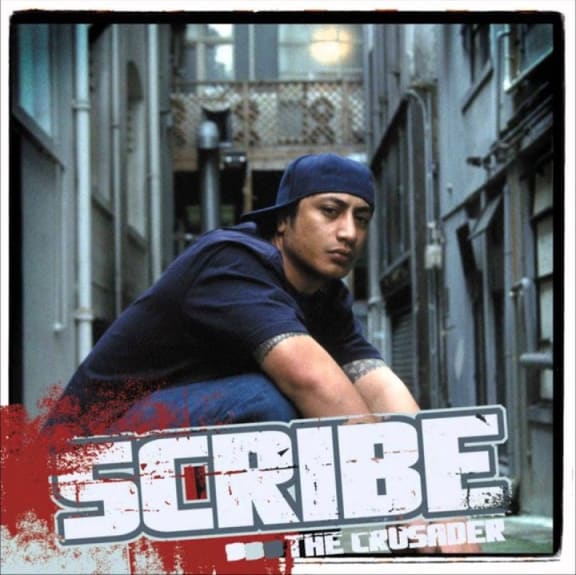
Photo: Scribe - The Crusader
"Congratulations. We made it"
The opening salvo on Scribe's debut album was not so much the young MC arriving at his destination, but the announcement that Aotearoa hip hop was here to stay.
There had been previous flashpoints beginning in the 1980s with Upper Hutt Posse's groundbreaking 'E Tū'. Over the following years hip hop would occasionally raise its head with acts like Dam Native, DLT, King Kapisi and Che Fu, then return to the subculture.
But when Malo Luafutu arrived as Scribe it was time for "New Zealand music to stand the f**k up". 'Not Many' and its unforgettable video featuring a slick showcase of hip hop's lyrical luminaries captured by filmmaker Chris Graham, had arrived at a key point in the New Zealand music.
Local music's stock was skyrocketing and hip hop's was rising with it. NZ On Air even modified its watermark to a graffiti style font to align with the flavour of local music videos of the time.
The early 2000s were a boom time for CD sales and the debut album of this Christchurch rapper was no exception. It is reported that it achieved gold sales status in just hours and platinum within days. The Crusader has now sold five times platinum (85,000 copies). The standout singles 'Stand Up’ and ‘Not Many' spent a combined total of 12 weeks in the number one spot. It was the first local album to simultaneously top the album and singles charts. The Crusader also found chart success in Australia.
The astute production of P-Money captured hip hop trends of the time. Crunchy rock riffs, the heavy bottom bass, and manipulated samples were melded with the signature sounds of the Pacific diaspora that showcased Scribe's range beyond the bombastic high energy hits. 'Dreaming' and 'So Nice' (the third and fourth singles) were the introspective and soulful stories of Scribe's childhood and aiga (family).
There were not many, if any dudes who had rolled like this in New Zealand music before. And Scribe himself was not able to do so again.
But through The Crusader he represented the energy and optimism of local music at the right time. And more importantly he cemented hip hop as an important and lasting part of Aotearoa's cultural identity.
# 12: Tha' Feelstyle - Break it To Pieces (2004)
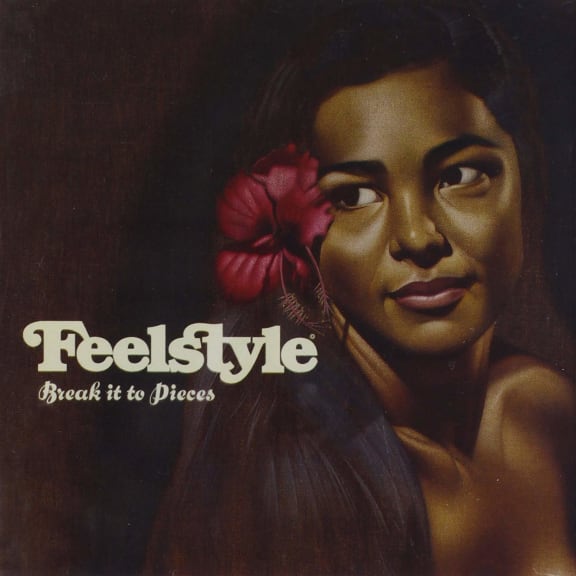
Photo: Tha Feelstyle - Break it To Pieces
Possibly the most evocative and iconic album cover of our music collections. The kitschy velvet painting of a beautiful Pacific woman beckons the listener to press play on the well-crafted, uniquely local and impeccably produced debut release by Tha' Feelstyle.
The Samoan rapper, known to his aiga (family) as Kas Futialo, had been around the battle rap scene since the 1980s (legend has it he defeated Upper Hutt Posse on the mic) and had gone on to lend his Samoan-English rhymes on many other artists' releases. But it was only in 2004 that his own album, Break it To Pieces, arrived.
Its strength is in the rich influences and sounds woven together in the accomplished production of Submariner (Andy Morton). Break It To Pieces is a snapshot of the roots, reggae and Pacific soul sounds so embedded in Aotearoa’s musical DNA, alongside the boom bap of conscious hip hop. It melds beautifully with Tha Feelstyle's stories of navigating an identity displaced from the land of Samoa but imbedded in the Aotearoa Pacific diaspora.
Press play on the single 'Su'amalie (I Ain't Mad at You)' and you're guaranteed to break out in a smile.
# 11: TrinityRoots - Home, Land and Sea (2004)
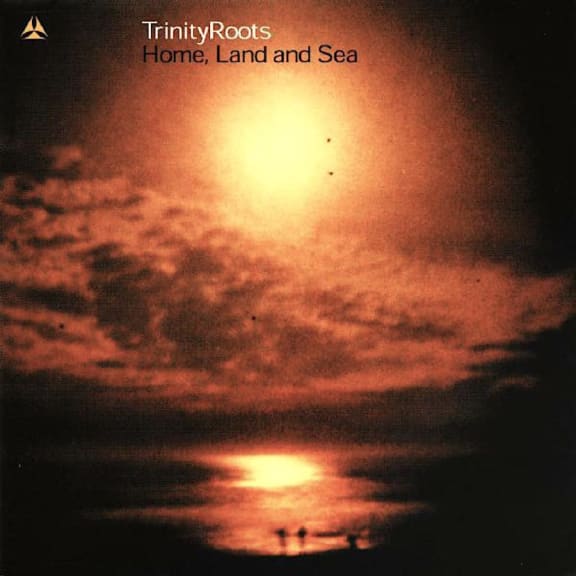
Photo: Trinity Roots - Home, Land and Sea
Similar to the ways Nesian Mystik's Polysaturated and Scribe’s Crusader were touchstones of New Zealand's evolving identity, Trinity Roots' second album tapped into an emotion that transcended many of New Zealand's divisive tendencies and struck a chord across the land. It is also one of Nick Bollinger's Essential NZ Albums.
It was a fraught time in New Zealand, the controversial Foreshore and Seabed Act reigniting tensions in Maori and Crown relations, as well as broader political debates around Treaty settlements and tino rangatiratanga (Maori sovereignty).
In among all that, Wellington jazz school trio Trinity Roots released the aptly titled Home, Land and Sea.
Recorded at The Surgery, headquarters of producer Lee Prebble (another MVP of the 21st Century of local music) Warren Maxwell (vocals and guitar), Rio Hemopo (vocals and bass) and Riki Gooch (drums, percussion) laid down a record that spans roots reggae, soul, blues, psych rock and funk.
Soul singer Hollie Smith features across the album, lending an extra warmth to Maxwell's distinctive gravelly soul voice especially on 'The Dream' and the title track, an emotional lament on this country's politically charged colonial history.
But the scene was set with the opening song 'Aotearoa'. Its simple arrangement, with a plaintive guitar and the sweet harmonies of Maxwell and Hemopo clearly shows Trinity Roots' influences to be more than straight up Jamaican riddims, as they inject deeper considerations into our national conversations.
# 10: Aldous Harding - Party (2017)
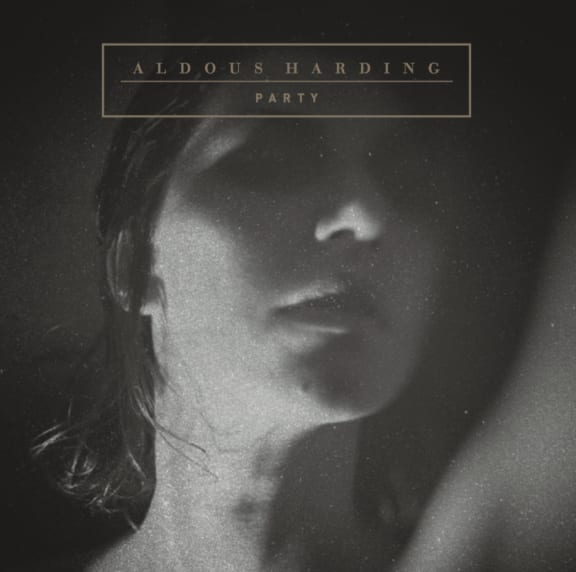
Photo: Aldous Harding - Party
Aldous Harding's second album, Party, saw the singer songwriter double down on the fantastical gothic folk world of Aldous. The album also saw a growing international audience for the alter ego of Lyttelton's Hannah Harding.
Some of our panel felt strongly about this year's follow up, the more playful and upbeat Designer, but Party won out due to its complete realisation of Aldous's internal and visceral world.
Recorded in Bristol with John Parrish, longtime producer of PJ Harvey, the restrained musical palette delicately ornaments Harding's vocals, which veer from softly enunciated musings to venomous shrieks and brays.
The strange voices that Harding inhabits on the album create the impression that one is being let into a place that lovelorn women aren't meant to reveal.
One panelist described the album as "the album that defines an era of my life that was full of uncertainty, instability and growth. Seeing yourself in art is what makes it most effective, and there is no album I see myself in more than Party."
# 9: Buffalo - Phoenix Foundation (2010)
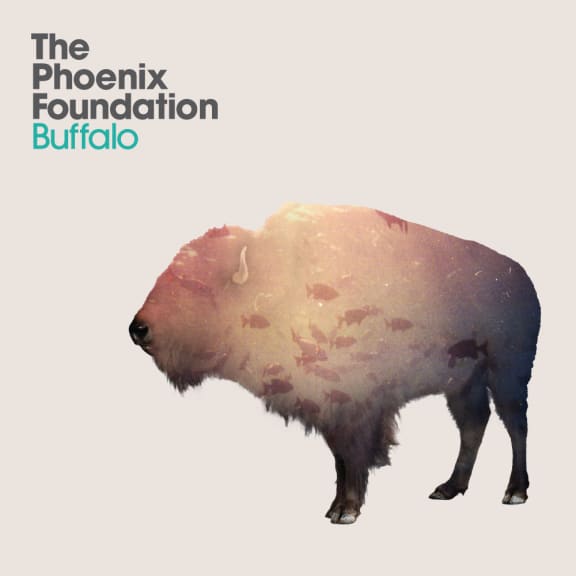
Photo: Buffalo - Phoenix Foundation
The Phoenix Foundation is another local act of the 21st Century whose prodigious output caused much debate among our panel.
To date, the Wellington six-piece has released six full-length albums and two EPs, as well as multiple solo and side projects. Oh, and last year saw the NZSO rework their catalogue too.
The panel eventually agreed on The Phoenix Foundation's fourth album, Buffalo over 2005's Pegasus and 2007's Happy Endings.
A panelist who gave Buffalo their number one spot, called it "a superb collection of beautifully recorded songs." This is in part due to Lee Prebble's masterful production. Prebble has had a long association with The Phoenix Foundation and many Wellington acts (Trinity Roots, The Black Seeds). On Buffalo he deftly captures the band's broad ambitions over ten tracks.
Buffalo opens with 'Eventually', a song that takes the listener straight into the Wellington green belt of nostalgia. The hazy, warm guitars, the mellow percussion and washes of sparkly synths cocoon slivers of coming-of-age observations.
Then follows the timeless Buffalo. It’s perhaps the finest distillation of what The Phoenix Foundation is capable of: expanding the musical horizons of unsuspecting listeners.
The entry point and anchor through Buffalo is the guitar, and Samuel Flynn Scott’s vocals, which effortlessly duck and dissolves into Luke Buda's. These are the guides through the whimsy of The Phoenix Foundation universe: surreal lyrics, twinkly synth textures, and layers of percussion and rhythm.
Once they've drawn you in with the delicate and gleaming 'Flock of Hearts', then the singalong qualities of 'Bitte Bitte', 'Orange and Mango's lines about tangos will seem completely, utterly reasonable.
Buffalo was positively received by local and international music media. It even scored the band an appearance on BBC's Later with Jools Holland.
# 8: Avantdale Bowling Club (2018)
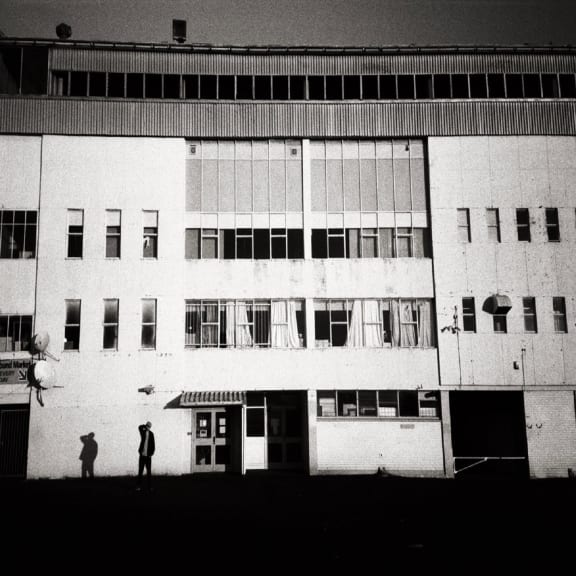
Photo: Avantdale Bowling Club
The new incarnation of once enfant terrible Tom Scott sees the Young Gifted and Broke rapper returning as an older, wiser and probably-still-broke rapper but with a bit of life experience to share.
While Scott would no doubt resist placing his record alongside Kendrick Lamar's hip hop jazz opus To Pimp a Butterfly, it is a fitting comparison. Both draw on the emotional spaciousness of jazz music to provide the base on which their socially and politically charged lyrical contemplations duck and weave.
At its core, hip hop is about telling the stories of the streets – the 'realness'. Take these bars from 'Home':
"Kinda like the history they hushed with the musket
Kinda like the ancient Maori custom they crushed into custard squares
Like tapu in the Tupperware cupboard
With the treaty that they kaka'd on"
Scott showcases his knack for conjuring familiar and relatable imagery to illustrate the obstacles and challenges people in his community face.
Avantdale Bowling Club is the coming of age for Aotearoa hip hop. One for both the jazz turtlenecks and the hip hop hoodies.
# 7: Unknown Mortal Orchestra - Multi-Love (2015)
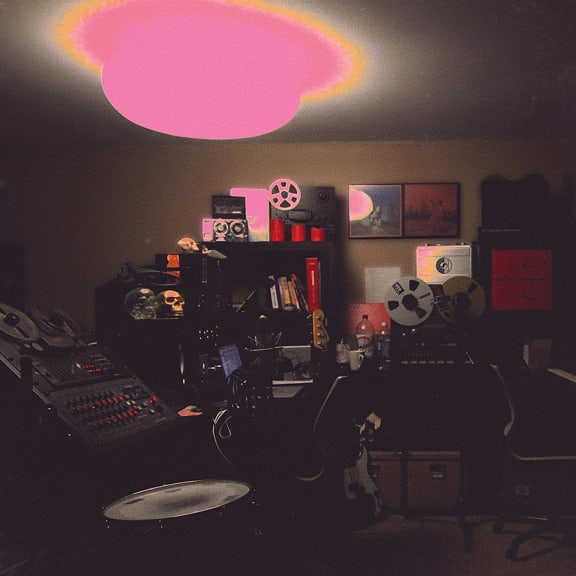
Photo: Unknown Mortal Orchestra - Multi-Love
New Zealand music would be all the poorer if it weren't for Ruban Nielson's complicated relationships.
Tension with brother Kody made and broke their previous band The Mint Chicks. From those ashes came Ruban's new band Unknown Mortal Orchestra.
The uncertain terrain of Ruban's polyamorous relationship forms the nucleus of UMO's third album, Multi-Love.
The album was written and recorded in Ruban's home studio in Portland, during the time he and his wife both fell in love with a young woman whom they invited to live with them and their children. The album cover, a dim and moody photo of Ruban's studio, was taken by the couple's former lover.
Multi-Love documents the doubt (‘Can't Keep Checking My Phone’), exhilaration (‘Ur Life One Night’) and highly-charged feelings ('Multi-Love') in their unconventional domestic arrangement.
The sound of the record is faithful to the tumultuous experience. Buoyant, funk bass and synths, oddly angular guitars, washy horns and the deep soul of a Rhodes organ are a few of the many elements Ruban has corralled into nine songs. It’s almost as though he was exploring every sound to soothe all the corners of his mind and heart.
The album also saw the Nielson brothers reunite, with Kody flying in from New Zealand to assist on the recording. Their father Chris plays the horn parts on 'Necessary Evil'.
Multi-Love is one of the most thrilling local releases of this decade, earning two number one spots among our panel. The title cut also earned Neilson the 2015 APRA Silver Scroll.
As one panellist put it, "None of NZ's major artists have displayed such exploratory boldness with successive releases as Ruban Nielson, and this effort is perhaps his most cohesive, filled with infinite possibilities and funkiness.”
# 6: Dimmer - I Believe You Are A Star (2001)
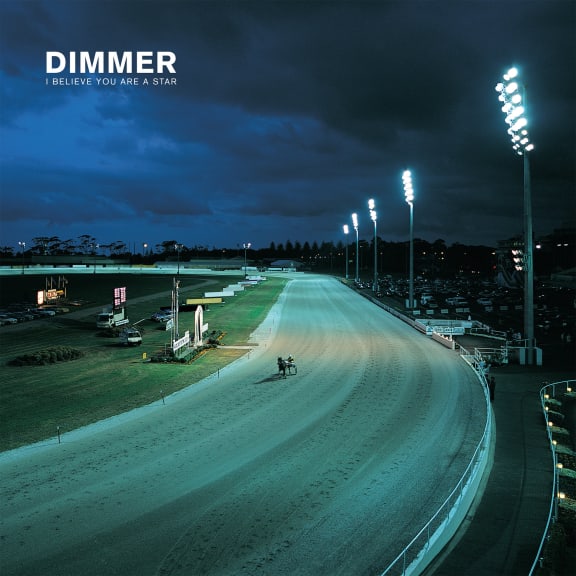
Photo: Dimmer - I Believe You are a Star
"I'm not your friend/I'm a stone-cold traitor" Shayne Carter informs us on 'Drop You Off', the opening track on I Believe You Are A Star, Dimmer’s debut LP.
The line could be read as a middle finger or a truth bomb to the legions of Flying Nun purists still hurting from the demise of Carter's revered band Straitjacket Fits.
Carter retains the power and emotion of his previous works (Bored Games, Double Happys, SJF), but this record is hewn from sources far outside the accepted range of the "Dunedin sound".
I Believe You Are A Star saw a soundscape that was less power chords and more Portishead with an embrace of synthesised elements.
Where previously Carter sounded like he addressed us from the front of the stage or band, in Dimmer it feels like he's just behind your shoulder and murmuring into your ear.
I Believe You are a Star achieves its intimate unease through the restrained and sparse, but occasionally sparkling electronic textures. It cradles Carter's voice which straddles delicate ('Pendulum'), brittle ('Smoke'), arrogant ('I Believe You are A Star') and defiant ('Evolution').
One panel member summarised the record as "the sound of Shayne Carter's long dark night of the soul but with no redemptive arc or ascension."
It was a bold comeback from Carter, and one the Flying Nun guitar hero pulled off with aplomb, proving himself to be one of the country's great writers/performers.
# 5: Bic Runga - Birds (2005)
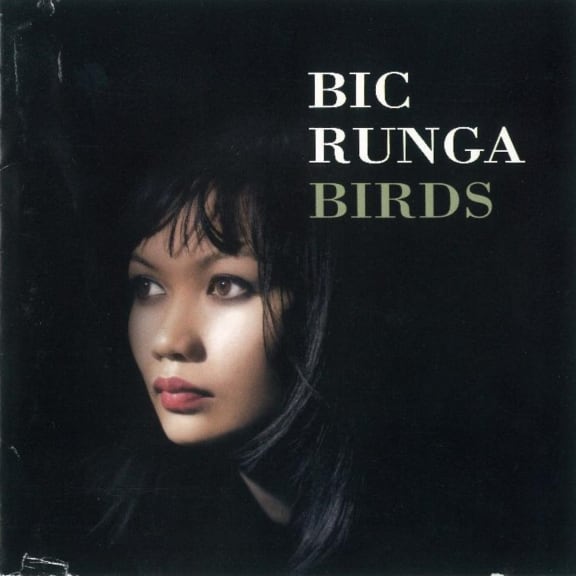
Photo: Bic Runga - Birds
Bic Runga has remained a steady presence in the Aotearoa musicscape since her 1995 single 'Drive', which established her reputation for perfectly crafted, pretty, radio-friendly songs.
But it’s her often overlooked third release Birds where we see Runga plumb deeper waters to deliver her most haunting and sombre collection of songs yet. The first indication of Birds' character is the album cover, which is simply a dark portrait of the singer with only the red of her lips as contrast.
The album was recorded at Auckland's Monte Cecelia House with an all-star band including Neil Finn (vocals, piano), Riki Gooch (drums, percussion), and backing vocalists Shayne Carter, Anika Moa and Anna Coddington.
Birds is expertly self-produced by Runga. Together with RNZ Music engineer Andre Upston, she captures the spaciousness of the recording location. A fitting companion to the warm, rich harmonies. Incidentally, Upston won Best Engineer at 2006 NZ Music Awards for this work.
Runga recorded the album not long after returning from Europe, the influence of Paris, and French artists looming large on songs including 'Blue Blue Heart' and 'Captured'.
There’s an unhurried pace to Birds that shows Runga maturing as an artist and person.
Runga's grief at the sudden death of her father prior to the release of Birds is the indelible shadow over the eleven songs. The closing track 'It's Over' is a lament to those we hold close to us, and the jaunty pull-yourself-together 'No Crying No More' gives the sense of someone having to grow up.
At the time of its release Birds was regarded the least commercially successful of Runga's releases. Yet it is the collection that has left a lasting impact on many of our panel, consistently featuring across our varied tastes. It earned the number one place for one panelist because it was "the New Zealand album I've listened to most this century." And with good reason, we reckon.
# 4: Mint Chicks - Crazy? Yes! Dumb? No! (2006)
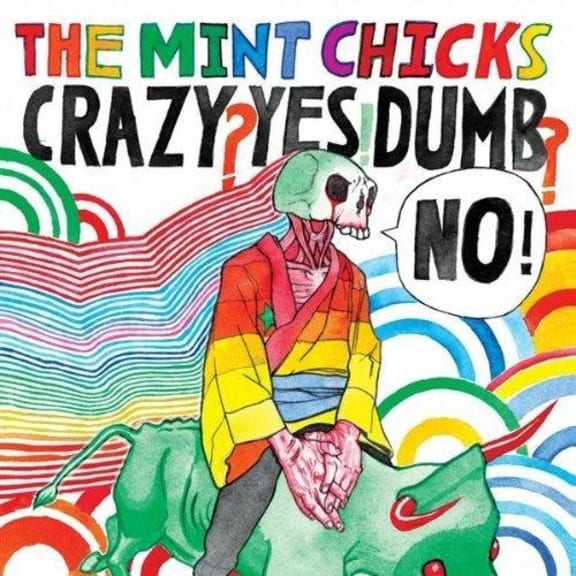
Photo: Mint Chicks - Crazy? Yes! Dumb? No!
One panelist boldly claimed that "no other local album or group will have as much impact on Gen Y and subsequent generations than Crazy? Yes! Dumb? No! by the Mint Chicks."
Within the subset of past and present Music 101 personnel this statement proved to be true. The second album from the Nielson brothers-led Mint Chicks was exceedingly popular, scoring the most number one spots from our panelists.
Crazy? Yes! Dumb? No! is rated for its originality, kinetic punk energy and the "harmonic precision of the Beatles". One panelist notes the "grunty" drumming of classically trained Paul Roper.
The album captured and built on the band's reputation. The Mint Chicks were known for their captivating, intensely energetic, and chaotic live shows, in part due to guitarist Ruban and vocalist Kody's volatile relationship. The brothers shared songwriting and producer duties, with father Chris assisting with production.
The memorable album cover, a gloriously weird confection rendered by Ruban Nielson, channels the essence of the all-important school project title page, made with every single felt tip at hand. The album’s contents of Crazy? Yes! Dumb? No! proves just as potent. Over 14 tracks it veers from precise punk forms to intricate synth textures and captivating off-kilter vocals.
The album propelled the band into the mainstream with a swag of awards, accolades and Gold sales status. The Mint Chicks were the prow of a thriving local guitar/punk/indie scene.
But this was also the beginning of the end of the original Mint Chicks line up, with the Nielson brothers relocating to Portland, Oregon where they recorded follow up album Screens without bassist Michael Logie.
Crazy? Yes! Dumb? No! is "timeless" according to our panel, and while we might shed a tear for the loss of this troublegum outfit, we can’t overlook the fact that, from the ashes of The Mint Chicks, rose Ruban Nielson's Unknown Mortal Orchestra.
# 3: Lorde - Pure Heroine (2013)
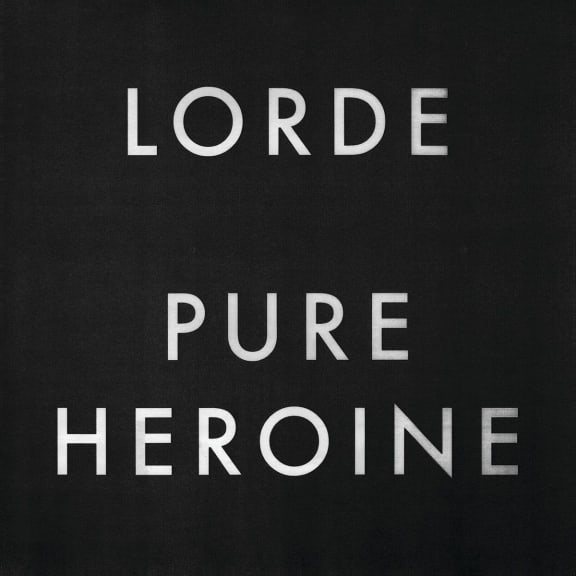
Photo: Lorde
No New Zealand music list could overlook the impact of Lorde's debut album, so it's hardly surprising that she's taken the number three spot.
Her full-length debut, Pure Heroine influenced pop music internationally, going double-platinum in the U.S., four-times platinum in New Zealand, and gold in the U.K.
Lorde's greatest drawcard, though, is in her first single, 'Royals'. This is where the world first encountered a 16-year-old girl from Takapuna, describing adolescent life with an eloquence and poeticism beyond her years.
It’s also when her producer Joel Little, who, up to that point was best known as the frontman of local pop punk act Goodnight Nurse, revealed himself as the Max Martin of the South Pacific. But comparisons with the Swedish hit machine end there, as Little's comparative restraint and innate understanding of Lorde's voice twisted the blueprint on the pop sound of the early 2010s.
'Royals' was followed by the singles 'Tennis Court' and 'Team', the latter of which was a Top 10 hit in the U.S.
Beyond the album, one panelist declared Lorde "a great role model." Though another conceded that her achievements "do make me feel like such an under-achiever!”
"Lorde knew exactly how to connect with her audience. She held on to a strong vision of how she wanted her work, and herself, to be presented."
Though some of our panelists found Lorde's follow up album, Melodrama, a more accomplished set, the broader impact of this debut won in the end.
# 2: Che Fu - Navigator (2001)
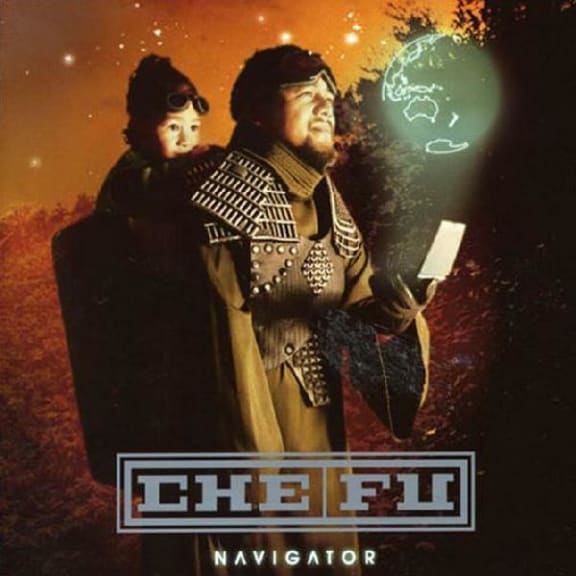
Photo: album cover
"Has there ever been someone as cool as Che?" - Koro Vaka'uta, RNZ Pacific news editor.
That so many of our panelists were compelled to share how much Navigator means to them, speaks to the power of Che Fu's second album.
Aside from Navigator placing in nearly half of all our panelist's lists, it was the album we received the most unsolicited written responses about. Navigator was also included in Nick Bollinger's Essential NZ Albums.
Many commented on Navigator's unifying and optimistic spirit; the "perfection"; the strength of the songs, singing and playing.
It’s a record of lasting quality that panelists strongly connected with ("It talks to me from a place I can relate to as a Pacific person in Aotearoa").
For one panellist, Navigator represents the arrival of a truly Pacific soul, with its seamless blending of reggae, RnB, hip hop and true stories.
Take 'Catch One', which recounts the story of how Che's mother and father met at a protest. There’s a political and conscious foundation in Navigator, reflecting the Ness family values (his parents helped establish the Rastafarian faith in Aotearoa and were involved in the Polynesian Panthers movement).
These values are particularly evident in songs like the te reo Māori 'He Kotahi (As One)', 'The Mish 2', 'Share The Info' and the beat-juggling closing track 'The Natural'.
The beauty of Che Fu's smooth, silvery was well-known from his Supergroove days, but on Navigator there’s an added authenticity that comes from Che singing about his own stories and concerns. He exudes the 'soul' of soul music.
The musicianship of his band The Krates featuring talent including Chip Matthews and Godfrey de Grut, further elevated Navigator. The latter co-wrote the Silver Scroll winning 'Misty Frequencies'. It was also the rise of his DJ and producer P-Money. At the time P-Money was a champion turntablist and DJ who’d come through the local hip hop scene, to become a key figure in the evolution of Aotearoa hip hop.
Navigator was a critical and commercial success, the album debuted at number one and achieved three times platinum status. But it’s the album's legacy and ongoing influence that really underscores its importance. Che Fu's album paved the way for Aotearoa hip hop’s subsequent ascendancy.
Many current and up-and-coming local hip hop/beats/soul acts cite Che Fu as a notable influence.
Navigator is an album that endures. Put it on today and it’s still a flawless expression of beautiful music with a message.
# 1: Fat Freddy's Drop - Based on True Story (2005)
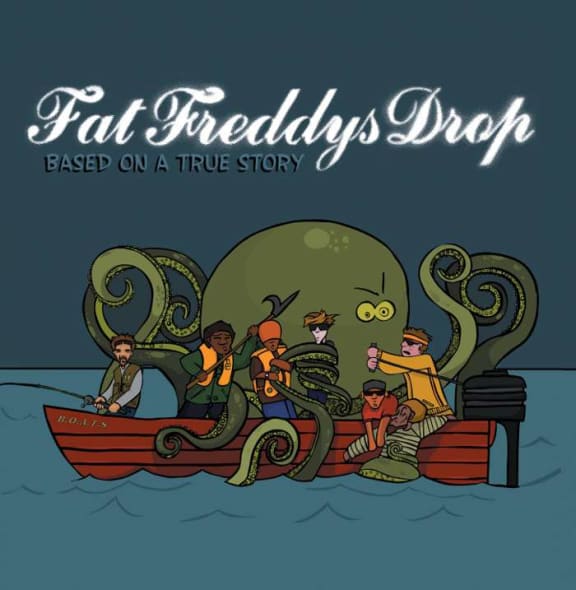
Fat Freddy's Drop - Based on a True Story Photo: The Drop
It's hard to think of another band that sounds like Fat Freddy's Drop. It is also difficult to imagine there are any New Zealanders who might not have heard Fat Freddy's Drop.
These are some of the reasons why Based on a True Story, the debut studio album of the Wellington band has taken the top spot in this countdown.
Based on a True Story received the most votes of all the albums submitted, and their other releases also rated highly in individual panelists' lists, making Fat Freddy's the most voted for act by our judges.
In Based on a True Story, Fat Freddy’s performed a musical alchemy and spun aural gold. Literally. The album achieved gold sales status in one day and has gone onto to be nine-times platinum after spending nearly two years on the NZ charts.
As astounding as this commercial success is, what is more extraordinary is that BOATS was an independent release with minimal promotion from a band that didn't have a drummer and with a collection of songs that averaged seven minutes long. Hit single 'Wandering Eye' edges towards the ten-minute mark.
But the quality of Based on a True Story goes well beyond sales. The album reflects a time when electronic and dance music cultures were moving overground into the mainstream. Reggae has long been in Aotearoa's musical DNA, but up until this time had stayed in its ganja-hazed lane. And New Zealand has always been partial to a good old rock riff.
The band themselves reflect the many flavours and sounds of our land. Among the seven players you find Maori, Polynesian, Pakeha and European ancestry and an encyclopaedic range of musical tastes. It is not unusual for DJ Mu to be found at a rock gig.
Fat Freddys' bring an improvisational jazz approach that, combined with their broad, left-of-centre and underground music appetites carves out something entirely original. Sound that has its origins in Jamaican soundsystems, Detroit techno warehouses, brass ensembles of New Orleans bass, the soul of Civil Rights-era USA and the rare groove of big city clubs all over the world.
Take 'Flashback' where rocksteady skank takes a sudden detour into some tribal dance beat and pops seamlessly back into the soulful, buttery vocals of Joe Dukie aka Dallas Tamaira.
'Cay's Cray' starts with a meditative bass rhythm and ascends into some interstellar adventure complete with latin jazz flute.
'Dark Days' is a more introspective track with horn lines underscoring its wistfulness.
'Roady' sees Tamaira and fellow Otautahi (Christchurch) singer Ladi6 reunite to bring the feelgood, summery vibes, also found on the trancy, dancy hit single 'Wandering Eye'. The former giving the bottom end of stereo speakers a severe workout with its squelchy bass notes.
The strength of Based on a True Story is that it presents these elements without diluting the original forms, leaving more adventurous listeners to make new sonic discoveries. The album caught the ears of international fans, including tastemakers such as BBC's Giles Peterson, who crowned it his Album of 2005.
Today Based on a True Story is seared into our memories, it's the ubiquitous sound of summer - it's been played so often in Aotearoa's eateries and bars you'd be forgiven for wondering if it’s a state-sanctioned national soundtrack. That we know Based on a True Story too well isn't the fault of the album or the band. In fact the opposite is true, they got it too right.
From a bathhouse in Lyall Bay to basements in Berlin, Fat Freddy's Drop prove that you can "do it for the love of music."
How we decided on the best NZ albums of the past 20 years
A panel of past and present RNZ Music crew and other RNZ people from all across the company ranked their top ten releases from the past two decades.
We gathered 40 lists of albums from presenters, sound engineers, producers, studio operators, journalists and contributors from RNZ National, RNZ Pacific and RNZ Concert.
Among our panel were fans of many genres: folk, reggae, metal, pop, noise, garage, hip hop, rock, electronic, classical, jazz and every other category that our musicians released material in.
Ten points were awarded to each first choice, and one point to the tenth-placed album on each list. Over 150 albums were voted for. There was maths (2030 points across all the albums that were listed) , and a moderating panel who reviewed the longlist to determine our final 21 albums, which we'll be sharing with you this Saturday from midday on Music 101.
The next 21 (albums that didn’t quite make the cut, but they’re excellent anyway)…
Aaradhna - Treble & Reverb
Aldous Harding - Designer
Anika Moa - In Swings the Tide
Beastwars - Beastwars
David Dallas - The Rose Tint
Don McGlashan - Lucky Star
Flight of the Concords - Flight of the Concords
Goldenhorse - Riverhead
Homebrew - Homebrew
Katchafire - Revival
Lawrence Arabia - Chant Darling
Liam Finn - I'll be Lightning
Lorde - Melodrama
P-Money - Big Things
Phoenix Foundation - Pegasus
Salmonella Dub - Inside the Dubplates
Shapeshifter - Soulstice
Tiny Ruins - Brightly Painted One
The Datsuns - The Datsuns
Trinity Roots - True
Troy Kingi - Shake That Skinny Ass All the Way to Zygertron

